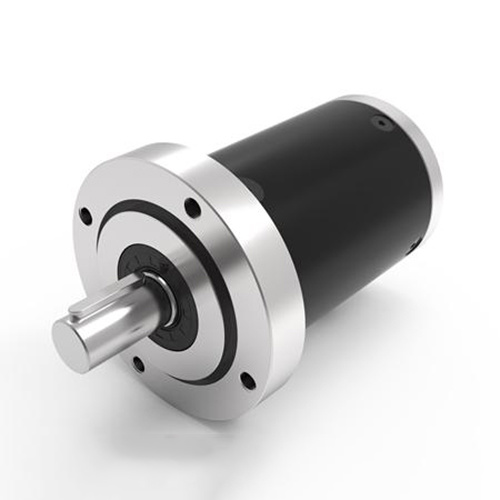Understanding Geared Motors: The Backbone of Modern Automation
2024-09-08
Geared motors are crucial components in many industrial and commercial applications, playing an integral role in the machinery that drives our modern world. They combine the functions of a motor and a gearbox to produce rotational motion. The primary purpose of a geared motor is to reduce speed while increasing torque, making it an ideal solution for applications that require precise control and substantial force at lower speeds.
The design of a geared motor typically consists of an electric motor paired with a gear reduction unit. The electric motor generates rotational energy, while the gear unit modifies that energy to achieve the desired output speed and torque. This configuration is especially useful in applications where high torque is needed, such as conveyor systems, robotics, and heavy machinery.
One of the main advantages of using geared motors is their ability to enhance efficiency. By reducing the speed of the motor output, geared motors can operate at optimal power levels, minimizing energy wastage. This means that machines can perform tasks more effectively, leading to lower operational costs and improved productivity.
Another significant benefit of geared motors is their versatility. They come in various sizes, power ratings, and gear configurations, making them suitable for a wide range of applications—from small household appliances to large industrial equipment. This adaptability allows engineers and designers to select the right geared motor for specific tasks, ensuring that the machinery operates smoothly without compromising performance.
In addition to efficiency and versatility, geared motors also contribute to precision in operation. The gear reduction allows for finer control over the speed and torque output, which is critical in applications that require accuracy, such as CNC machines or automated assembly lines. This precision also helps in protecting the motor from overload conditions, extending its lifespan and reliability.
Furthermore, geared motors are often designed to withstand harsh operating environments. Many geared motors feature robust housing and protective coatings to resist dust, moisture, and other contaminants, making them ideal for use in industries such as food processing, pharmaceuticals, and robotics.
When selecting a geared motor, it is essential to consider factors such as the required torque, speed, and application environment. Understanding these parameters will help in choosing a geared motor that not only meets performance requirements but also adheres to safety and efficiency standards.
In conclusion, geared motors play an indispensable role in modern automation, offering solutions that enhance efficiency, versatility, and precision. Their unique design and functionality make them a vital component in various industries, ensuring that machinery operates smoothly and effectively in an increasingly automated world. Whether you’re involved in manufacturing, robotics, or any application requiring mechanical movement, understanding the significance of geared motors can lead to better operational outcomes.
The design of a geared motor typically consists of an electric motor paired with a gear reduction unit. The electric motor generates rotational energy, while the gear unit modifies that energy to achieve the desired output speed and torque. This configuration is especially useful in applications where high torque is needed, such as conveyor systems, robotics, and heavy machinery.
One of the main advantages of using geared motors is their ability to enhance efficiency. By reducing the speed of the motor output, geared motors can operate at optimal power levels, minimizing energy wastage. This means that machines can perform tasks more effectively, leading to lower operational costs and improved productivity.
Another significant benefit of geared motors is their versatility. They come in various sizes, power ratings, and gear configurations, making them suitable for a wide range of applications—from small household appliances to large industrial equipment. This adaptability allows engineers and designers to select the right geared motor for specific tasks, ensuring that the machinery operates smoothly without compromising performance.
In addition to efficiency and versatility, geared motors also contribute to precision in operation. The gear reduction allows for finer control over the speed and torque output, which is critical in applications that require accuracy, such as CNC machines or automated assembly lines. This precision also helps in protecting the motor from overload conditions, extending its lifespan and reliability.
Furthermore, geared motors are often designed to withstand harsh operating environments. Many geared motors feature robust housing and protective coatings to resist dust, moisture, and other contaminants, making them ideal for use in industries such as food processing, pharmaceuticals, and robotics.
When selecting a geared motor, it is essential to consider factors such as the required torque, speed, and application environment. Understanding these parameters will help in choosing a geared motor that not only meets performance requirements but also adheres to safety and efficiency standards.
In conclusion, geared motors play an indispensable role in modern automation, offering solutions that enhance efficiency, versatility, and precision. Their unique design and functionality make them a vital component in various industries, ensuring that machinery operates smoothly and effectively in an increasingly automated world. Whether you’re involved in manufacturing, robotics, or any application requiring mechanical movement, understanding the significance of geared motors can lead to better operational outcomes.
Related news
Anhui High Precision Gear Transmission Co., Ltd
Chuzhou High Precision New Energy Techonology Co., Ltd
language
English
العربية
বাংলাদেশ
Български
Hrvatski
Česky
Dansk
Nederland
 Esperanto
Esperanto
Slovenski
Filipino
Suomi
Français
Maori
 Shqiptare
Shqiptare
Georgian
 Euskara
Euskara
Deutsch
Ελλάδα
ישראל
इंडिया
Magyarország
Ísland
Indonesia
Irlanda
Italia
日本語
Sovensko
Հայաստան
한국
Kyrgyz
ປະເທດລາວ
 Zulu
Zulu
Latvian
Lithuanian
Luxembourgish
 Latinus
Latinus
Macedonian
Малайская
Maltese
Монгол улс
 Cymraeg
Cymraeg
ဗမာ
 தமிழ்
தமிழ்
नेपाल
Norge
ایران
Polska
Portugal
România
Российская
Србија
 Slovak
Slovak
Србија
 Slovak
Slovak
Bosanski
Slovenian
Беларус
España
Sverige
Точик
ประเทศไทย
Türk
Azərbaycan
Uzbek
 Afrikaans
Afrikaans
Việt Nam
Sales frontline:
Contact: Joanna
WhatsApp:8613989800585
E-mail: info@dxtlexp.com
Copyright © 2022 Anhui High Precision Gear Transmission Co., Ltd | Business license | Powered by www.300.cn | SEO







